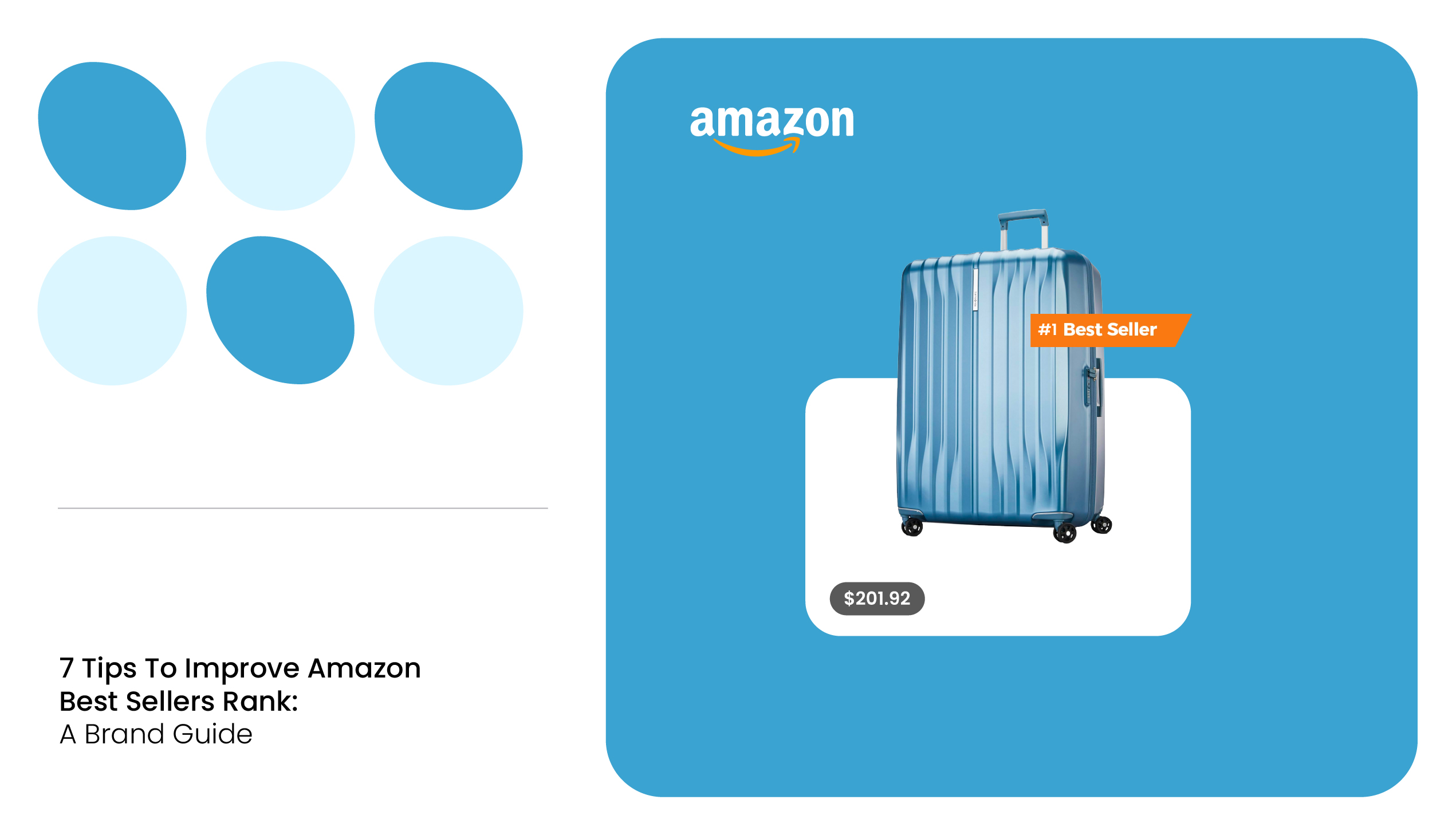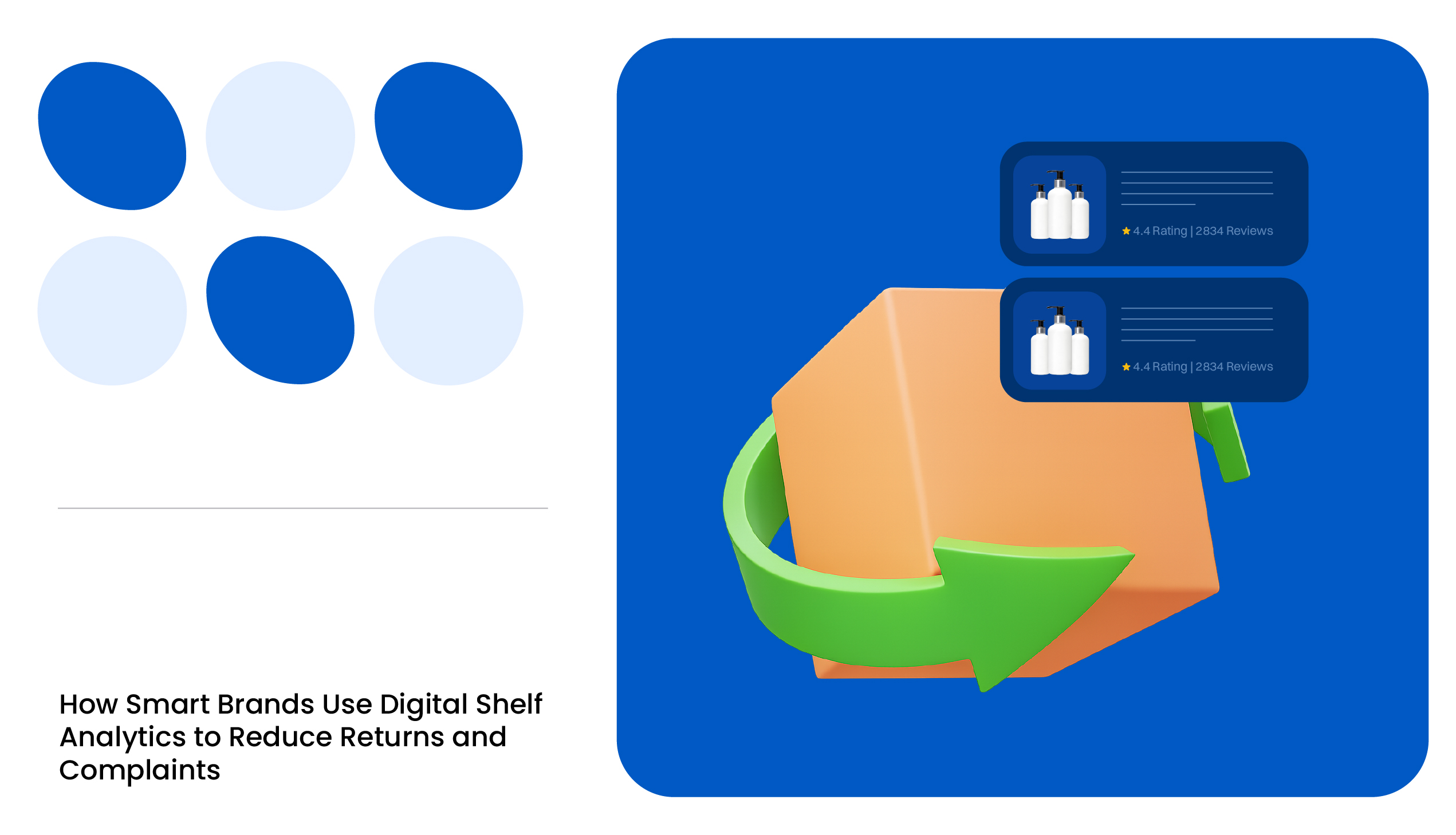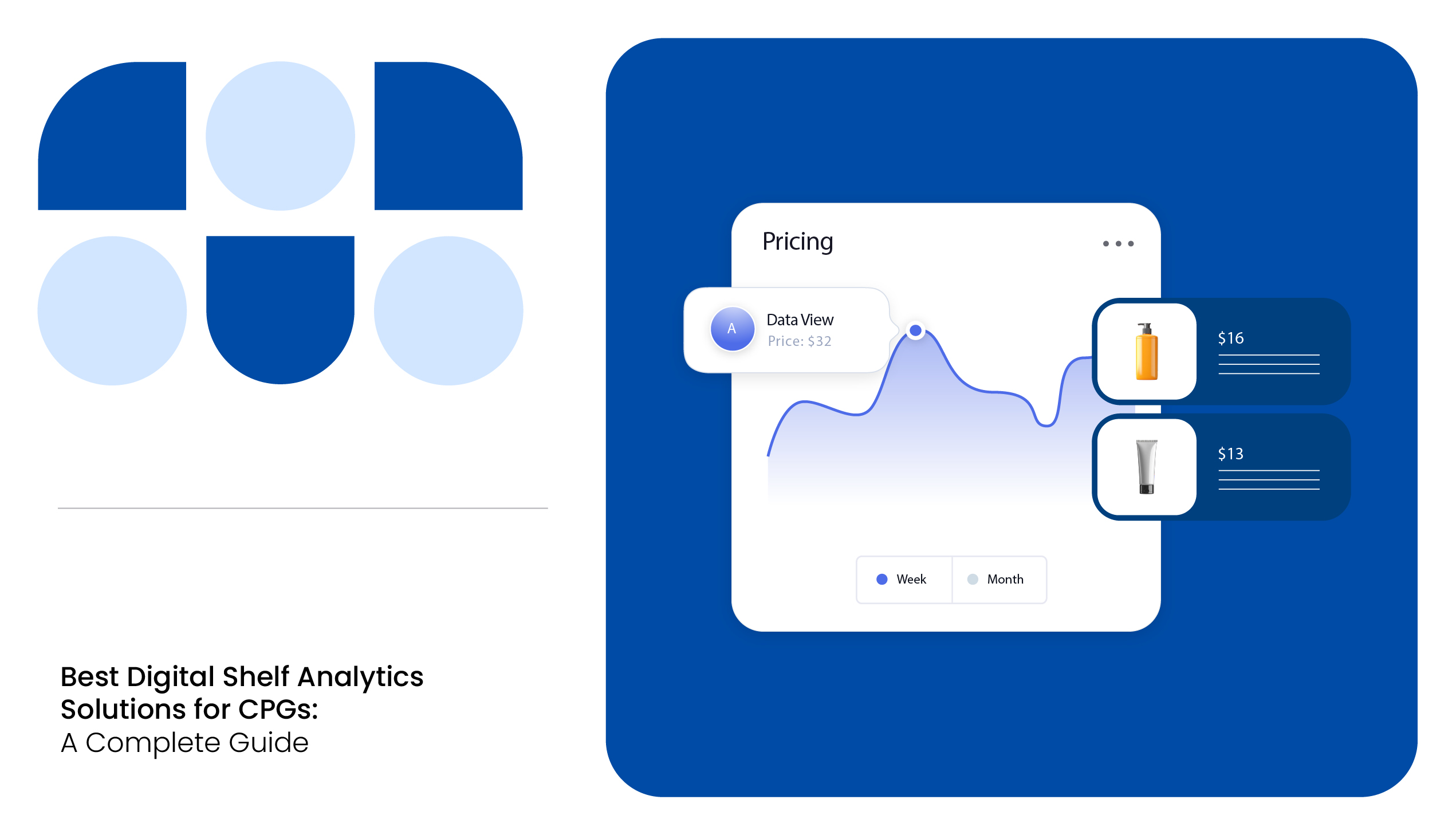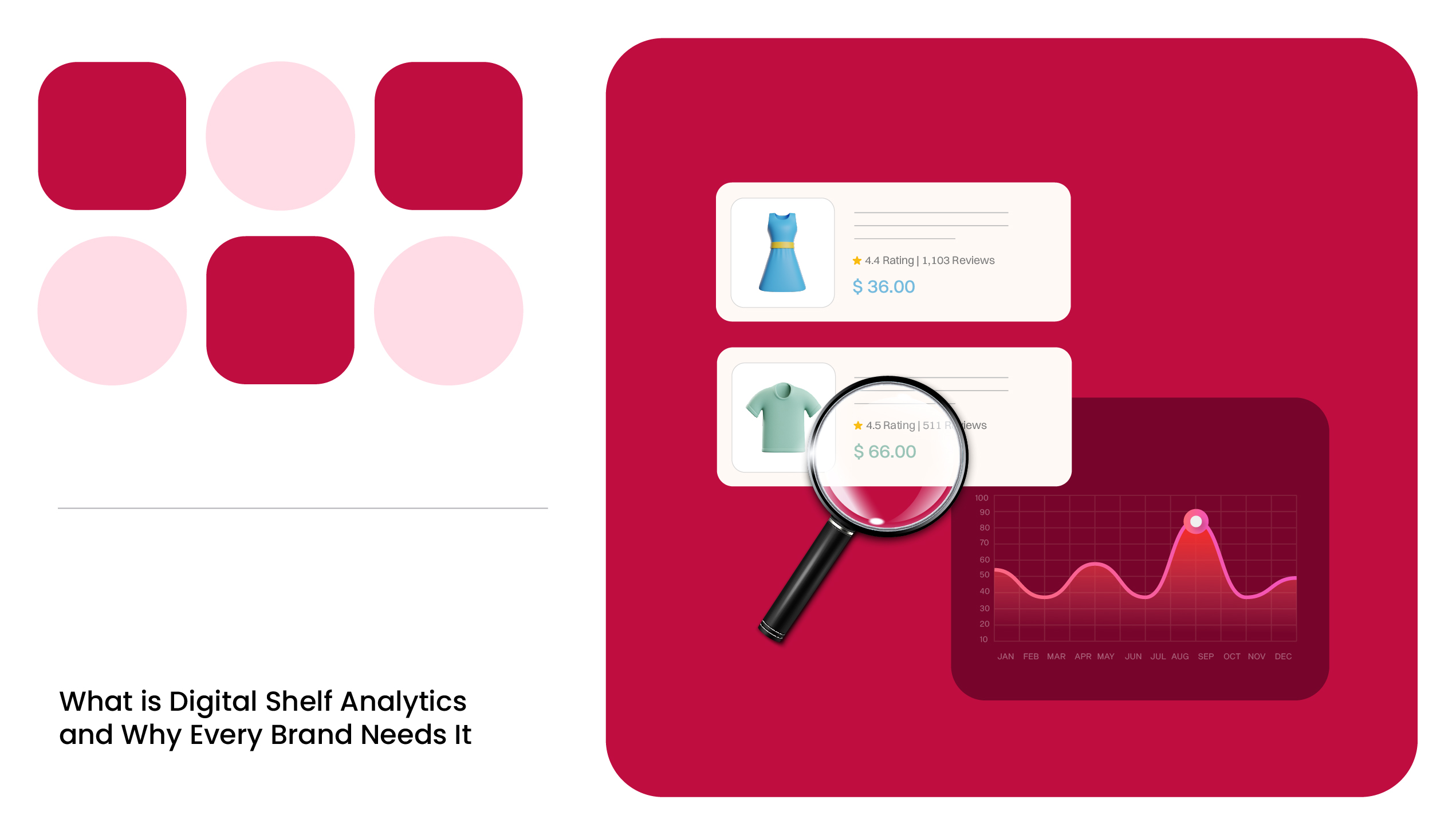Whether you’re just dipping your toes in the world of Amazon selling or you’ve been hustling for a while, you know that one thing matters for sure: Amazon Best Sellers Rank.
Getting a top spot isn’t just about a performing product; it’s also about the brand perspective. A better rank means more visibility, more clicks, and more conversions. And in Amazon, if you’re not ranking, you’re sinking.
So, how do you crack the code and get your products to climb rankings?
A third-party digital shelf analytics tool can help improve Amazon Best Sellers Rank with actionable strategies.
Whether you’re a seasoned seller or just planning to launch, the following guide will help you get ahead of the competition.
Let’s dive in.
What Is Amazon Best Sellers Rank?
Before we get into the nitty-gritty of improving your rank, let’s quickly define what Amazon Best Sellers Rank (BSR) is.
Also known as Amazon Sales Rank, Best Sellers Rank is an indicator of how well your product is selling compared to others in the same category or sub-category.
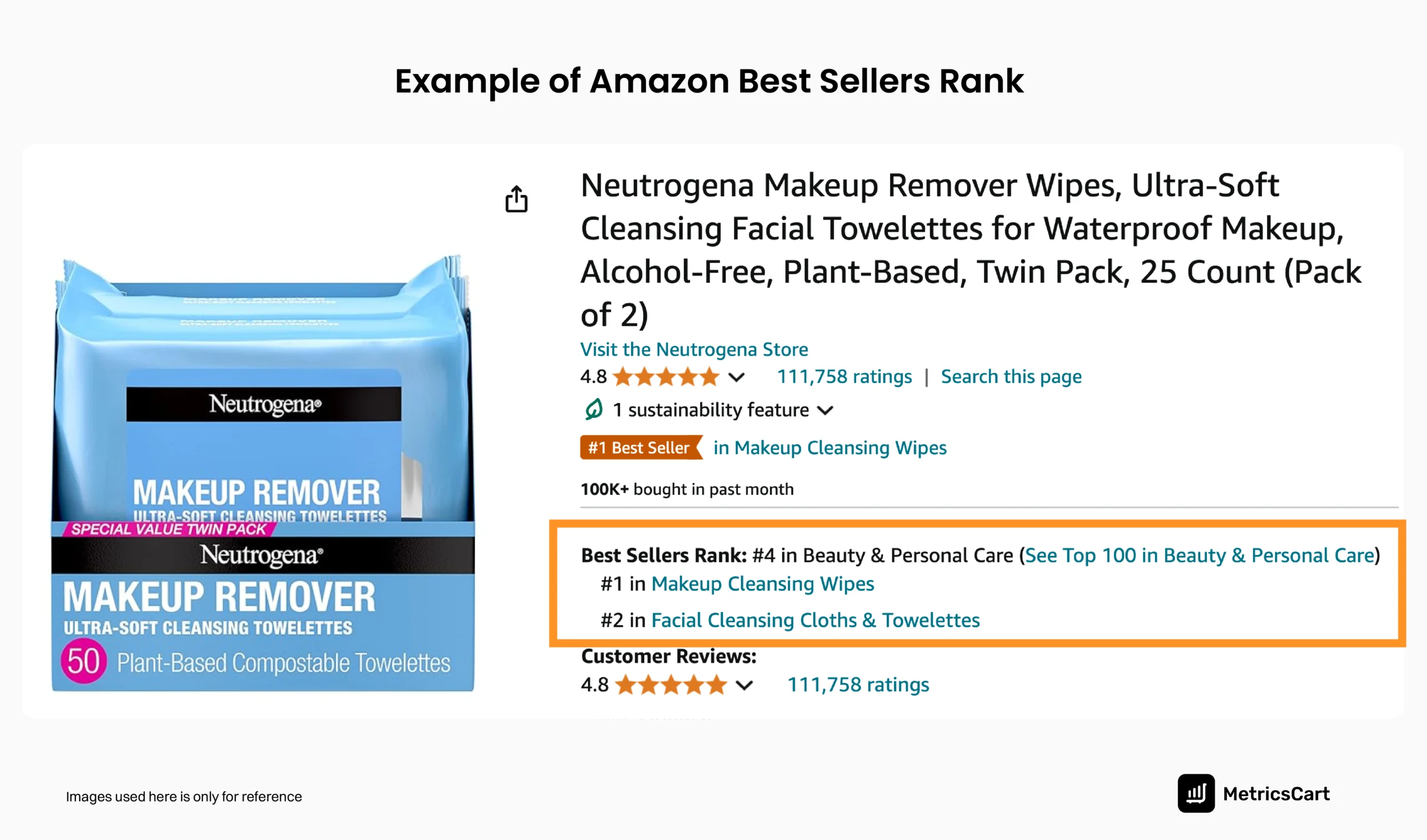
Amazon assigns a BSR to nearly every product sold on the platform, and this ranking updates every hour based on recent sales.
The lower the rank number, the better your product is performing. So, if your product has a sales rank of #1 in its category, congratulations, you’re outselling the competition in that space!
READ MORE | What are the most common Amazon seller mistakes? Check out our new blog on the 6 Common Amazon Seller Mistakes and How You Can Conquer Them.
Do You Need a Best Sellers Rank?
Your Amazon Sales Rank can boost trust, as customers may feel that your brand is more credible than others who lack the Amazon Best Sellers Ranking.
Here are some of the benefits of getting a Best Sellers Rank:
- Increases product visibility
- Earns customer trust and loyalty
- Provides competitive edge against competitors
Products or brands with Amazon BSR are more likely to be preferred by customers and have better overall sales performance on Amazon than products without it.
How Is BSR Calculated?
While Amazon doesn’t publish an official guide to the exact workings of its BSR algorithm, sellers and experts have identified several key factors that affect how your product is ranked.
Here are some of the criteria for Best Sellers Ranking on Amazon:
- Listing quality and optimization
- Frequency of sales
- Recent sales performance
- Category and sub-category performance
- Competitive pricing
- Product reviews and ratings
- Fast delivery assurance
- Product availability
These factors can influence Amazon’s Best Sellers Rank (BSR), and they are vital to optimizing your performance and achieving higher rankings.
How To Improve Amazon BSR?
Now that we know why seller rank matters, let’s get into how to ensure bestseller rank optimization.

Optimize Your Product Listings
If your product listings aren’t optimized, you’re not even in the game. Amazon’s A9 algorithm relies heavily on relevancy and performance factors when ranking products. That means your product listing needs to be clean, optimized, and compelling.
Your bullet points and description should highlight the most notable features and benefits of your product. Think of them as your elevator pitch. Use this space to include secondary keywords and convince shoppers why your product is the best choice.
These carefully crafted brand descriptions will help you to boost Amazon BSR.
Include Backend Search Terms
Amazon allows you to include additional search terms in the backend of your listing. These terms are not visible to customers but help Amazon’s algorithm understand which searches your product should appear in and boost Amazon organic ranking.
Adding backend keywords is also a crucial step in bestseller rank optimization, since it increases the chances of your product showing up for a broader range of relevant searches.
Sometimes, these terms can have misspelled words or phrases as they reflect how customers would search for a particular product.
So, it is more about strategizing rather than presenting information, like in the case of product page listing keywords. Currently, Amazon has increased its backend keyword limit from 250 to 500 characters, giving sellers more room to improve discoverability and support overall bestseller rank optimization efforts.
Drive Sales Velocity
Amazon rewards products that sell. Your sales velocity, or the speed at which your product sells, directly impacts your Amazon Sales Rank.
The more sales you make, the better your rank will be. But how do you boost sales without being at the top of the rankings already?
Amazon Pay Per Click ads help you get your products in front of the right people fast. Even if you’re not ranking organically, PPC can boost your visibility and bring in traffic.
Offering discounts and promotions is another surefire way to increase sales velocity. During peak shopping seasons or new product launches, running a promotion can create a surge in demand that improves your seller rank.
Increase Positive Reviews and Ratings
Amazon’s A9 algorithm places a heavy emphasis on social proof, such as reviews and ratings. A feedback rate of over 90% makes your product eligible for Buy Box.
The more positive reviews you have, the more trustworthy and credible your product appears, which leads to higher conversion rates and a better seller rank.
It is of prime importance for a brand to understand what its customers are trying to communicate and how these ratings and reviews help in product development.
Distilling the reviews using review monitoring software and finding insights can help a brand strategize its brand positioning and increase overall goodwill.
READ MORE | Confused about how to choose an online review management software? Check out our blog on Choosing the Right Online Review Management Software: A Brand Perspective
Get Amazon Bestseller Reports for Brands & Categories
To truly succeed with bestseller rank optimization, brands need continuous market intelligence. MetricsCart’s Amazon Bestseller reports track top-performing products and categories across Amazon, helping brands identify growth opportunities, benchmark against competitors, and fine-tune their strategies.
The Bestseller Rank Report for Brands highlights the top-performing brands across Amazon marketplaces, updated on a monthly basis. It gives you a clear picture of which brands are climbing the charts, which ones are losing visibility, and how your competitors are moving within their categories.
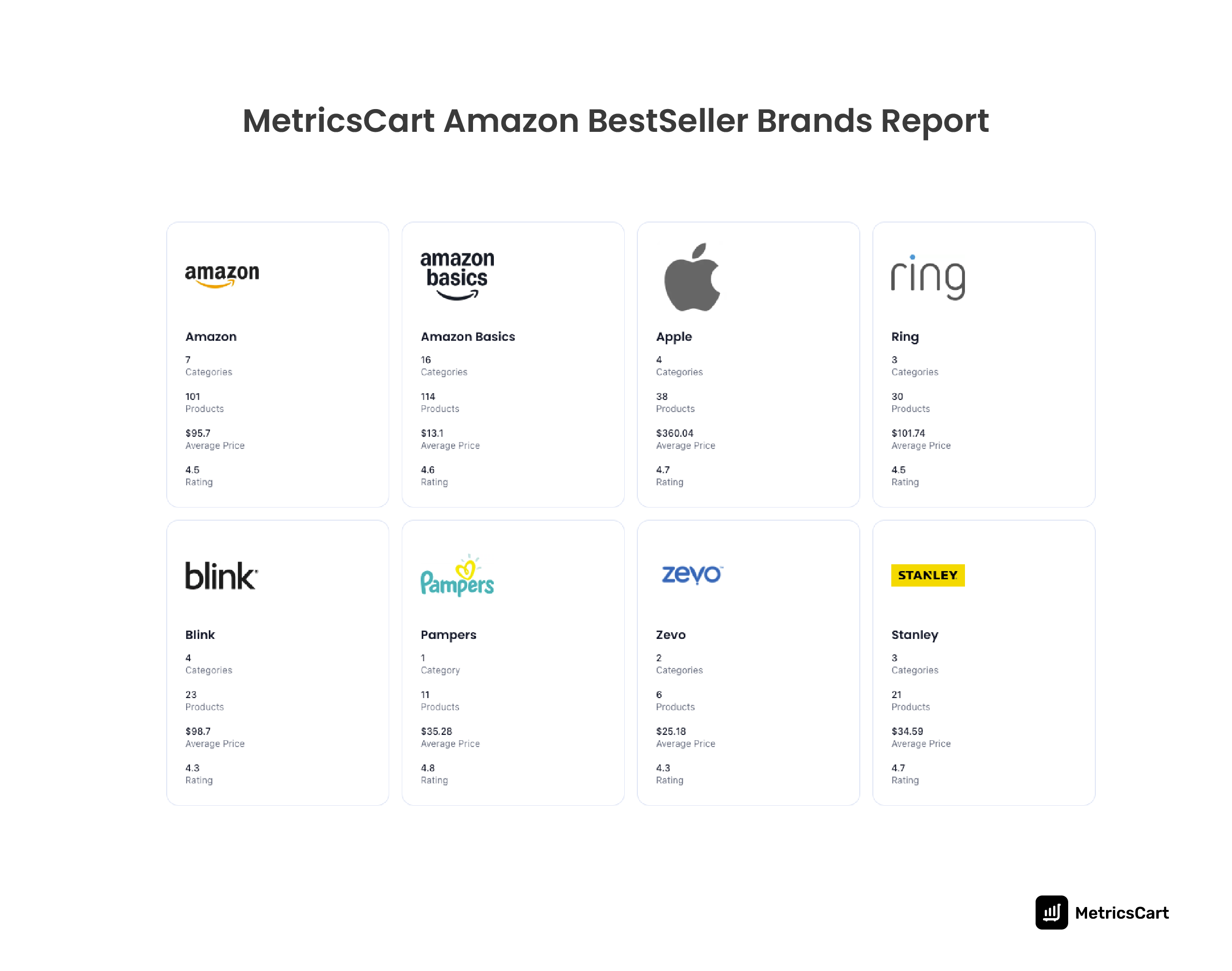
The Bestseller Category Report drills down into the performance of individual categories on Amazon. It lists the best-selling products, the number of brands competing within each category, and pricing trends such as average price and price ranges.
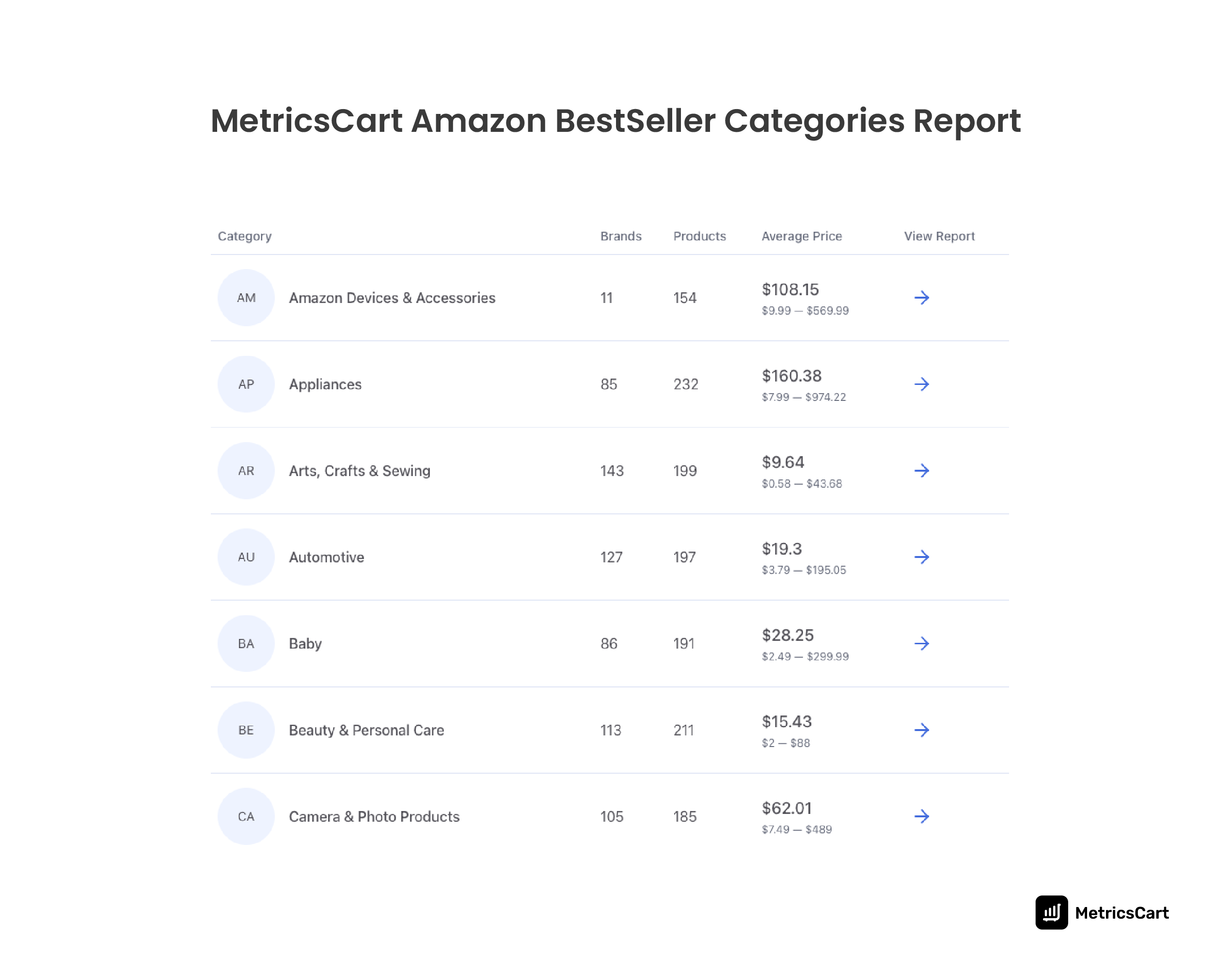
Currently, MetricsCart provides Amazon bestseller insights for the US, UK, and India, three of the most competitive marketplaces globally. By monitoring trends across these regions, brands can understand what drives bestseller rank, spot rising products early, and refine their strategies accordingly.
Maintain Competitive Pricing
Amazon shoppers are all about value. If your product is priced significantly higher than your competitors, it will affect your sales velocity and, by extension, your seller rank.
However, pricing too low can hurt your profit margins and make customers question the quality of your product.
Competitive pricing goes a long way toward establishing a consistent presence on the Amazon Buy Box and attracting loyal customers to your brand.
So, it becomes essential to price your product in a way that complements Amazon’s pricing strategy. This strategy allows your price to be adjusted based on real-time demand and competition.
Prefer Fulfillment by Amazon (FBA)
Amazon heavily favors products fulfilled by its logistics network, which is known as Fulfillment by Amazon (FBA). If you’re not using FBA, you might be missing out on key benefits like:
Prime Eligibility
FBA products are automatically Prime eligible, which means faster shipping and more exposure to Prime members (who spend more on average).
Better Buy Box Chances
FBA increases your chances of winning the coveted Amazon Buy Box, which accounts for around 82% of Amazon’s sales.
Monitor Inventory and Avoid Stockouts
Imagine running out of stock right when your product is climbing the rankings. Stockouts can devastate your Amazon Sales Rank.
Not only do they stop sales, but they can also push your competitors ahead, making it harder to regain your position.
Use digital shelf analytics tools like MetricsCart to monitor your inventory levels, analyze past sales trends, especially during peak seasons, forecast your inventory needs, and avoid running out of stock.
Amazon penalizes sellers who frequently run out of stock, so make sure your supply chain can handle the demand.
Difference Between Best Sellers Rank and Search Ranking
Although Best Sellers Rank and search ranking are often used interchangeably, they serve different purposes on Amazon.
BSR reflects how well your product sells relative to others in the same category or subcategory. It is updated hourly based on recent sales performance.
Conversely, search ranking is determined by Amazon’s A9 algorithm, which considers factors like keyword relevance, sales velocity, product reviews, and price competitiveness to decide where your product appears in search results.
While a high BSR indicates strong sales performance, it doesn’t necessarily mean your product will appear at the top of search results unless your listing is optimized for relevant keywords.
Both BSR and search ranking matter for your brand, but they measure different aspects of your product’s success.
Conclusion
Improving your Amazon Best Sellers Rank isn’t unattainable, but it does require strategic effort and consistent monitoring using digital shelf solutions.
Focus on the aspects mentioned above, and you’ll soon see your products climbing the rankings, attracting more customers, and generating more sales.
Every factor, from backend keywords and pricing to reviews and advertising, influences how your products show up in search and how customers engage with them. The Best Sellers Rank should be a metric to track over time, reflecting the health of your overall marketplace strategy.
With MetricsCart’s monthly Bestseller Reports, you can spotlight shifts in leading brands and categories across the US, UK, and India, which can help you stay on top of these changes and make timely adjustments.
With the right insights and steady optimization, improving your rankings, capturing customer attention, and driving long-term sales growth becomes an achievable reality.
Ready To Take Your Brand Performance to the Next Level?
FAQ
While Amazon Best Sellers Rank (BSR) reflects how well a product sells, it doesn’t directly impact search ranking. However, products with solid sales tend to perform better in search results due to their higher relevance and sales velocity.
Yes, a product can have multiple BSRs if it is listed in more than one category or subcategory. Each category will have its own BSR based on how well the product sells within that specific group.
Amazon BSR is calculated based on recent sales volume relative to other products within the same category or subcategory. It updates hourly, with more emphasis on the most recent sales trends.

